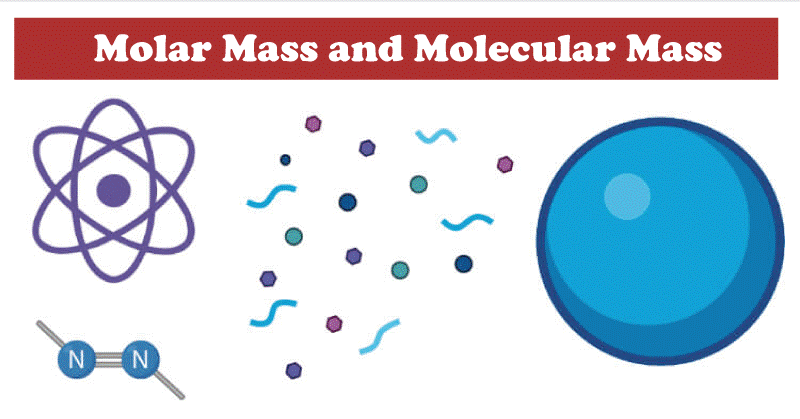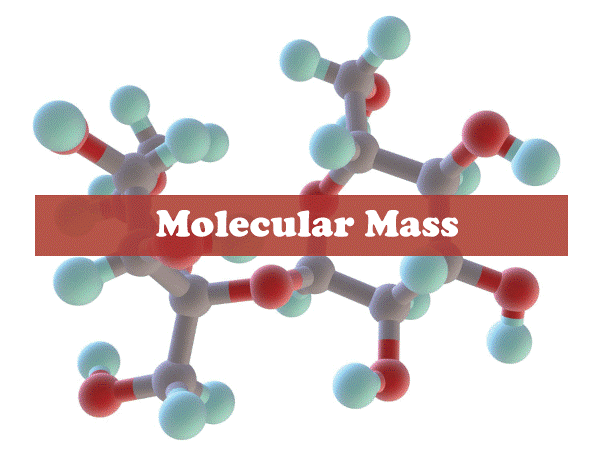Difference Between Molar Mass and Molecular MassMolar and molecular masses are typically used in chemistry to measure the material. These are critical chemical concepts. 
Grams per mole are used to express molar Mass. Furthermore, it can be described as kilograms per mole. The measurement of molecular mass is done in atomic mass units. Molecular Mass
The mass of one individual molecule determines the molecular mass of a material. The isotopes cause the molecular mass to change. Atomic mass units are abbreviated as amu and amu is the measurement unit used to describe molecular Mass. Molar Mass
The substance's mass in a certain amount is called its molar mass. This information provides the number of molecules, atoms, or compounds that compose one mole of a given substance. The molar mass unit in the SI is g/mol. Important Considerations
Molar Mass V/S Molecular Mass
These are some of the critical differences between molar Mass and molecular Mass to help you understand how they differ from one another:
ConclusionThe molar mass, sometimes referred to as the molecular weight, is the total mass of the atoms needed to create a molecule or mole, represented in grams.Grams/moles are used to measure molar Mass. Numerical ExampleMolar Mass: Oxygen has a mass of 15.9994 grams per mole. Thus, the molar Mass is equal to 15.9994 g/mol. Molecular Mass: Ca (OH molecular Mass equals 74 atomic mass units. Questions and Answers about Molar Mass and Molecular MassQuestion 1: Why is the molar mass unit measured in grams per mole? Answer: The quantity of atoms, molecules, ions, or formula units that make up a chemical compound is measured using molecular weights. Its value may be compared to counting units like two (2) and twelve (12). Avogadro found that a chemical's mole equals the number of molecules or formula units (6.02214076 x 1023 mol). The molar mass of a chemical determines its mass and the number of grams per mole. What is intended is the molar mass, or, to put it another way, the total mass in grams of all the atoms that make up a mole of a specific molecule. Molar mass is therefore expressed as grams per mole. Question 2: How is the molar Mass of a chemical determined? Answer: Finding the Mass of a compound entails three steps: The chemical formula determines how many atoms are present in each compound element. Add the number of atoms in the combination to the atomic weight of each component. After totaling everything, convert it to grams/mole. Question 3: Determine the molecular weight of HN . Answer: Calculations showed that HN has the following molecular Mass: Molecular mass = H atomic mass + N atomic mass + 3* O atomic mass = 1 + 14 + 48 = 63 u. Question 4: How is a molecule's Mass determined? Answer: The total mass of all the atoms in a single molecule makes up the molecular mass of material. For example, Water ( O) H has an atomic mass of 1 u and O has an atomic mass of 16u Water's molecular Mass = 2 x (Times of atomic Mass of H) + 1 x (Times of atomic Mass of O) = 2 x 1 + 16 x 1 = 18 u Question 5: Why is the Mole concept necessary? Answer: It enables chemists to weigh amounts of two substances, like iron and sulfur, to get an equal quantity of each element's atoms. A mole of a substance is defined as a quantity of material that contains precisely 12,000 g of 12C's exact number of atoms as fundamental units. Question 6: Why is the Avogadro number referred to as a mole? Answer: The element's weight in atomic mass units equals the density of one mole in grams. A few years later, the French scientist Jean Perrin gave the number of units that make up one mole its Avogadro name. For example, 6.022140758 x 1023 molecules create one mole of water. Question 7: What does the term "mole" mean? Answer: Chemical quantities are measured in terms of moles. This establishes a connection between the atom and the macroscopic amounts of materials we work with in the lab. It enables the scientist to weigh amounts of two chemicals, such as iron and sulfur, to obtain an equal number of iron and sulfur atoms. Question 8: What is the Avogadro law? Answer: An experimental gas law known as the law of Avogadro, sometimes known as the rule of Avogadro or the theory of Avogadro, connects the volume of a gas to the amount of gas present. According to Avogadro's rule, equal amounts of all gases have the same number of molecules at the same temperature and pressure. Question 9: How many moles make into a mole? Answer: The mole, commonly abbreviated as mol, is a SI unit that counts the number of particles in a specific substance. 6.02214179 moles, or other fundamental units like molecules, are equivalent to one mole.
Next Topicdifference-between
|
 For Videos Join Our Youtube Channel: Join Now
For Videos Join Our Youtube Channel: Join Now
Feedback
- Send your Feedback to [email protected]
Help Others, Please Share










